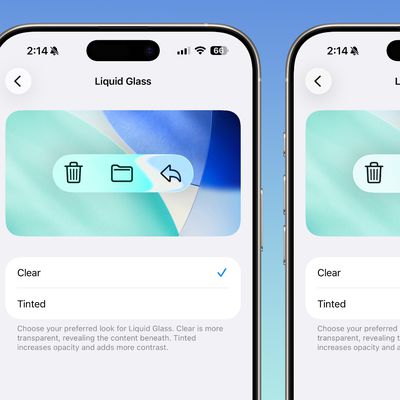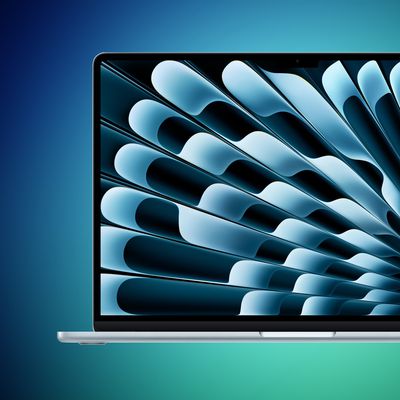 Ulysses, the company behind the popular Ulysses writing apps for Mac, iPhone, and iPad, today announced that it is transitioning to a subscription model going forward.
Ulysses, the company behind the popular Ulysses writing apps for Mac, iPhone, and iPad, today announced that it is transitioning to a subscription model going forward.
Starting today, Ulysses will be priced at $4.99 per month or $39.99 per year, with a subscription plan unlocking Ulysses for use on all devices. Ulysses is also offering a student plan with six months of access for $10.99, and there are now two-week free trials available.
With a subscription model, Ulysses says the company will be able to do steady, small releases more often, focusing more on the needs of the user base rather than aiming for big updates to lure in new customers.
Co-founder Max Seelemann about the new subscription model: "This step was necessary to put Ulysses' future development on a solid foundation. We weighed several alternatives -- paid updates among them -- and concluded that the subscription model, as it is available with the App Store since 2016, is best suited to meet both our customers' needs and our needs as developers."
To encourage existing customers to switch over to the new subscription model, Ulysses is offering a permanent life-long discount on the yearly plan, dropping the price from $40 per year to $30 per year (50% off a monthly subscription).
Customers who recently purchased Ulysses for Mac can get up to 12 months of free use, while customers who have purchased the app on an iOS device can get up to six months of free use based on grace periods calculated from the date of purchase. Ulysses plans to inform customers about the offers from within the app.
The single-purchase versions of Ulysses have been removed from sale but will remain functional. The apps are updated for High Sierra and iOS 11, but going forward, new features will only be added to the subscription versions of the apps.
Ulysses for Mac can be downloaded from the Mac App Store for free. [Direct Link]
Ulysses for iOS can be downloaded from the App Store for free. [Direct Link]

























Top Rated Comments
A tiny bit of history
Software purchases used to be very different from how they are today. Until not too long ago, you would purchase an application and get a physical copy on a bunch of floppies (or later a CD). The thing you got — that was it. No patches, no updates. Developers had to put forward an extreme amount of attention to get everything right, because once an app was out, development had to be done.
And that’s also what you paid for: A finished product. Essentially, you paid the development time spent up until the app’s release. New features were then delivered via a new version, and you had to pay again, if you wanted that new version.
Things changed with the advent of the internet, of course. As soon as we had dial-up connections, developers could offer small patches to fix issues that were found after shipping. And once broadband connections were ubiquitously available, larger and more frequent patches were possible. At first, these resulted in new features being added on-the-fly, but it quickly evolved into issuing more and more substantial patches — until today, where most v1.0s are mere sketches of a future product.
I disagree with the way things are today completely. I'm sick and tired of paying $70 for AAA Video games that spend the next 6 months patching bugs and AI issues long after I've beaten the broken game that shipped with thousands of bugs or the balls for that dev to charge me $50 in DLC to get all of the stuff they wanted to ship with the game.
The issue is compounded with Software where developers are shipping (to use Ulysses' words) "where most v1.0s are mere sketches of a future product." This also is ********. Just like when I bought a packaged version of Roxio Toast or Microsoft Office or iDVD back in 2001 and had a full expectation that every feature worked without having to call the developer to pay S&H to get them to mail me an updated version that works, I feel the same way about apps today.
Ship 1.0 feature-complete. Work on 2.0 and charge me an upgrade fee. Don't ship software until its done. If someone else beats you to market, you ship later but better than them because you took the time to perfect things.
Subscriptions are not the way you afford to release "1.0s that are mere sketches"
If your application isn't ready, don't ship it. I would greatly prefer to receive a new piece of software every 18 months that's feature complete and nearly bug-free (no software has 0 bugs). The only reasonable expectation I have in the Internet age is that developers patch security bugs, bugs that would cause instability of your app and file corruption on my computer. If your app works without any security issues, don't update anything and save it for 2.0 when I have to pay another $50 to have the latest version.
--
Imagine buying Roxio Toast and installing it and going to burn a DVR-RW and Roxio says "Coming soon, DVD-R only. Write us an email with a $5 payment to unlock DVD-RW burning. 1.0 was just a mere sketch of what we plan on doing with this app over the coming year"
I use some of these apps once a month and some I use once a week. I would prefer to pay $250 a year for all of them than $5 per month for each of these. An annual $5-$50 for major improvements to the app is worth it to me on these applications I rely on for some of my tasks.
I open Ulysses on a monthly basis when I'm working on something long-form that will eventually go into MS Word and be shared with colleagues in .docx format w/ fancy graphs. But the long-form writing, I'll do it in Ulysses. At $5 a month, that means I'm spending $5 per document to draft out a long-form idea that will be edited elsewhere. If I didn't already own it, I wouldn't subscribe to that model. I don't use Ulysses every day so my subscription isn't spread out in any meaningful way. It uses my iCloud drive for syncing and I've never emailed the company asking for support. There are no additional features I'm asking them for.
Subscriptions work in apps that I use every single day. I see Office 365 a valuable subscription. Lightroom, something I use every 2 weeks, I bought outright. I did the math on my blog last week ('https://adamchandler.me/blog/2017/07/25/technology-still-against-software-subscriptions/').
I looked at my Amazon History. I paid $144 for Lightroom 6 standalone in May of 2015. On a monthly basis, I’ve spent $5.50 a month to own Lightroom and if it’s ever updated to version 7, I could continue to run version 6 for the next decade as it suits my needs.
If I had spent $10 a month on Adobe Creative Cloud photographers, I’d have Photoshop which I never use and will have spent $260 for the same software.
For some applications, a subscription makes sense. But Onyx which I run twice a year to clean up my Mac or A Better Finder Rename I open every 3 months to mass-rename some files or Sequence I use to assemble a Time Lapse once a year when I go on my road trip, if those developers decide to charge $1-$10 a month to use their application, they can piss off.
Edit:
"But what about maintenance updates, coding the application to support new MacOS releases and keep it from crashing at launch and supporting the existing user base? These cost the developer money long after you've spent it"
If a developer doesn't want to patch bugs in their application, I'll just buy another application in 2-3 years when yours stops launching. If you want to release 1.0 for $25 and then abandon it and not write another line of code, that's fine, there are a lot of applications on Mac that perform similar tasks. I don't owe you $5 a month when I can save my pennies and give them to someone else in 2-3 years when your app finally craps the bed.
code gets stale, bugs pop up, OS upgrades break apps and competitors rise with cooler features. You can choose to remain competitive at a loss and accept an annualized major upgrade that causes all users to pay you for the cool new stuff or accept the money you got up front and never touch the code again
In fact, there is a lot of mediocre Open source software out there that costs nothing to use. If every single Macintosh application is a subscription in 10 years, I'll write my own apps or go 100% open source and deal with the rawness and unpredictability of them.
Typical arrogance associated with the subscription model.